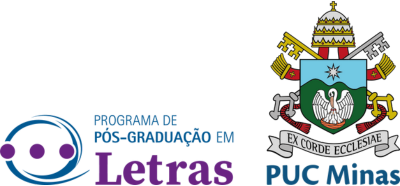Os benefícios interacionais do uso do discurso reportado direto por uma pessoa com afasia
DOI:
https://doi.org/10.5752/P.2358-3428.2015v19n36p285Keywords:
Afasia, Linguística, Interação, Discurso reportado direto,Abstract
Este estudo objetiva investigar os benefícios interacionais do uso do discurso reportado direto por uma pessoa com afasia, fundamentando-se em abordagens interacionais em linguística (Tannen, 1989; Schely-Newman, 2009) e afasia (Hengst et al., 2005; Wilkinson et. al, 2010). A análise dos dados de fala revela: construção de enunciados inteligíveis, turnos sem atraso e narrativas; inclusão da fala de personagens ausentes na interação; polidez; e gerenciamento da comunicação. Conclui-se que tais benefícios interacionais poderiam não ser alcançados sem o uso do discurso reportado direto devido às limitações impostas pela afasia.
Downloads
References
COUDRY, Maria Irma Hadler. Diário de Narciso: discurso e afasia. 3. ed. São Paulo: Martins Fontes, 2001. Original publicado em 1988.
GOLDSTEIN, Kurt. Language and Language Disturbances. New York: Grune and Stratton, 1948.
GUMPERZ, J. J. On Interactional sociolinguistic method. In: Sarangi & Robert, Talk, work and institutional order. Berlin, New York: Mouton Gruyter. (pp. 453-471), 1999.
HENGST, Julie A.; FRAME, Simone R.; NEUMAN-STRITZEL, Tiffany;
GANNAWAY, Rachel. Using Others’ Words: Conversational Use of Reported Speech by Individuals With Aphasia and Their Communication Partners. Journal of Speech, Language, and Hearing Research, v. 48, p. 137-156, Feb. 2005.
JACKSON, John Hughlings. Selected Writings of John Hughlings Jackson. James Taylor (Ed.). London: Hodder and Staughton, 1931.
LANINI, Aline Gruppi; OLIVEIRA, Mônika Miranda de; VIEIRA, Amitza Torres. A utilização da prosódia por uma pessoa com afasia como um recurso para lidar com o déficit linguístico. Gatilho, Juiz de Fora, UFJF, ano 5, v. 10, p. 1-21, jun., 2010.
MURDOCH, Bruce E. Desenvolvimento da fala e distúrbios da linguagem – uma abordagem neuroanatômica e neurofisiológica. Rio de Janeiro: Revinter, 1997.
OLIVEIRA, Mônika Miranda de. O uso do discurso reportado direto por uma pessoa com afasia: um estudo à luz da interface entre as vertentes linguísticas cognitiva e interacional. Dissertação (Mestrado) – Universidade Federal de Juiz de Fora, Juiz de Fora, 2011.
OLIVEIRA, Livia Miranda de; OLIVEIRA, Mônika Miranda de. O uso do discurso reportado direto por uma pessoa com afasia na construção de uma narrativa. Revista CEFAC, v. 16, n. 1, p. 131-146, jan./fev. 2014.
PENN, Claire. Compensation and language recovery in the chronic aphasic patient.In: Aphasiology, v. 1, p. 235-245, 1987.
SACKS, Harvey; SCHEGLOFF, Emanuel A.; JEFFERSON, Gail. A Simplest Systematics for the Organization of Turn-Taking for Conversation. Language, v. 50, n. 4, p. 696-735, Dec. 1974.
SCHELY-NEWMAN, Esther. Defining Success, Defending Failure: Functions of Reported Talk. Research on Language and Social Interaction, v. 42, n. 3, p. 191-209, 2009.
SCHIFFRIN, Deborah. Discourse markers. Cambridge: Cambridge University Press, 1987.
SCHIFFRIN, Deborah. Interactional Sociolinguistics. In: SCHIFFRIN, Deborah. Approaches to Discourse. Oxford: Blackwell publishers, 1994.
TANNEN, Deborah. “Oh talking voice that is so sweet”: constructing dialogue in conversation. In: TANNEN, Deborah. Talking voices. Cambridge: Cambridge University Press, 1989.
WILKINSON, Ray; BEEKE, Suzanne; MAXIM, Jane. Formulating Actions and Events With Limited Linguistic Resources: Enactment and Iconicity in Agrammatic Aphasic Talk. Research on Language & Social Interaction, v. 43, n. 1, p. 57-84, jun. 2010.
Downloads
Published
How to Cite
Issue
Section
License
By submitting any manuscript (articles, reviews, or interviews) authors automatically assign full copyrights to PUC Minas. Authors are requested to ensure:
• The absence of conflicts of interest (relations between authors, companies/ institutions or individuals with an interest in the topic covered by the article), as well as funding agencies or sponsoring institutions of the research that culminated in the article.
This file is licensed under the Creative Commons Attribution - Share Alike 4.0 International.









